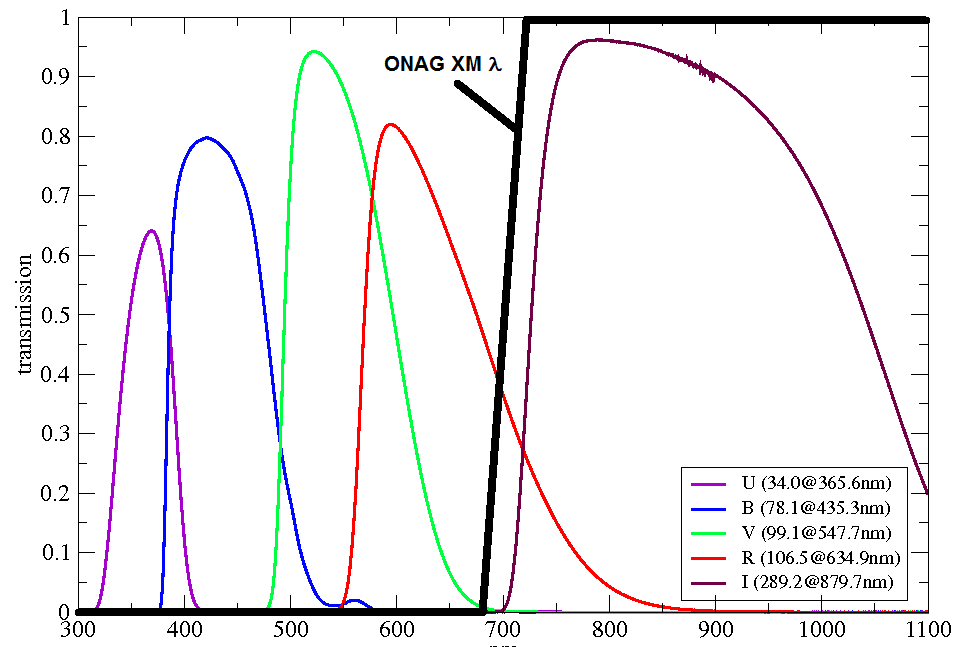“Observers, have been guiding their telescopes since the dawn of long-exposure astrophotography. It’s a need that arises from a very long list of mechanical, optical, and atmospheric factors that makes it all but impossible for a simple telescope drive to precisely follows a celestial object for more than a minute or two as it moves across the sky.”
“Enter the ONAG®. Because digital detectors in today’s autoguiders are sensitive to near-infrared (NIR) light beyond the visual spectrum, the ONAG® works by sending a telescope’s visible light to the imager camera and the NIR to the guider system…”
“…Ingenious!” And it works because digital technology has given us the opportunity to easily use NIR light for guiding.”
“The guiding was remarkably accurate during all my testing”.
“A clever as the concept behind the ONAG® is, the devil is on the details, and that’s where the ONAG® really shines.
The device,… , is extremely well engineered and, more importantly, well made.”
(Dennis di Cicco, Sky & Telescope December 2012, pages 60-63)
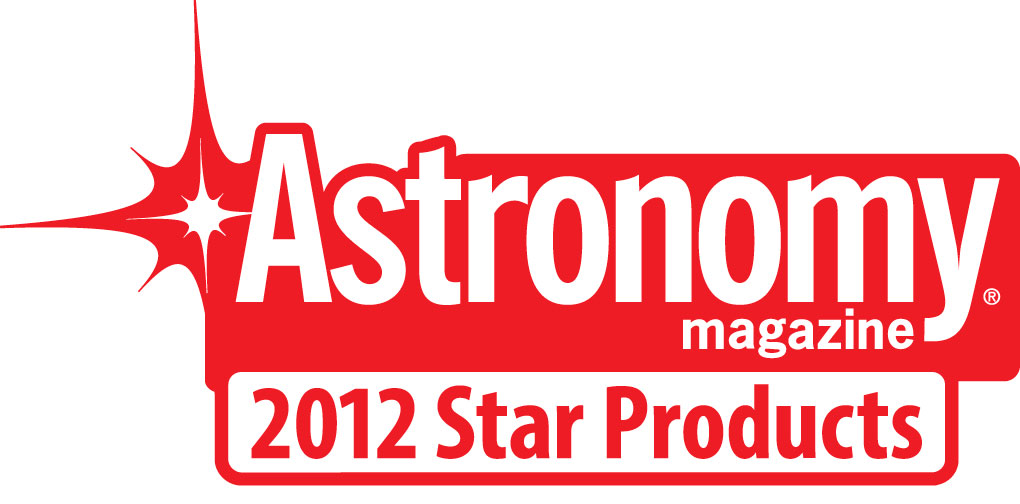

How does an ON Axis Guider (ONAG®) work?
The ONAG uses a new, innovative and unique, patent pending technology from Innovations Foresight. Our ONAG has a special dichroic beam splitter (DBS) which is also known as “cold” mirror inside of it. This is bascily an inferential filter.
The ONAG’s DBS reflects the visible light from the telescope to the imaging camera and passes the near infrared (NIR) light, which is usually useless for imaging purposes anyway, to the guiding camera for auto-guiding.
The ONAG has an integrated X/Y stage for your guider which provides a wide field of view (FOV) for selecting the guide star. As a matter of fact the ONAG allows for ON, as well as OFF axis, operations presenting you scope FOV to your guider. And since there is no rotation involved for acquiring a guide star you can reuse your flat frames over and over again.
With a large chip guiding camera the ONAG offers the unique opportunity for multi-star auto-guidging (supported by some software) using your main scope instead of a guide scope, eliminating any differential flexure issues.
This is also a good option for remote/automated setups since it doe not require adjusting the X/Y stage, just keep and lock it on axis.
Better the ONAG enables true real time auto-focus operations, where your scope is kept at best focus while imaging. No need for any time consuming periodic re-focusing anymore, thanks to our patent pending SharpLock technology, only available with our ONAG.
CMOS and CCD chips used for cameras are quite sensitive on NIR. More and more sensors are designed with enhanced NIR quantum efficiency efficiency (QE) for low light, night vision capabilities, such as security cameras, or smartphones.
The large majority of the stars emit a lot of NIR energy.
Therefore when using our ONAG you take advantage of this, and auto-guiding software applications will display stars in NIR like they do in visible.
On the right side there is a typical sensor quantum efficiency plot (QE of the Sony ICX429, EXview HAD CCD classes of chip) with the ONAG 750nm cut-off wavelength superimposed.
Typical camera sensor QE and ONAG's DBS
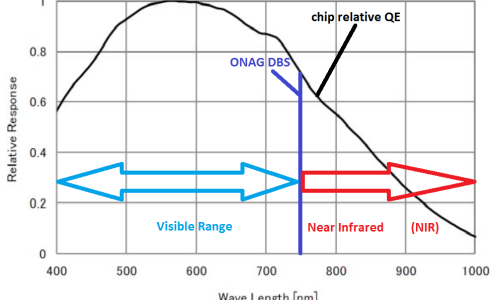
ONAG Concept
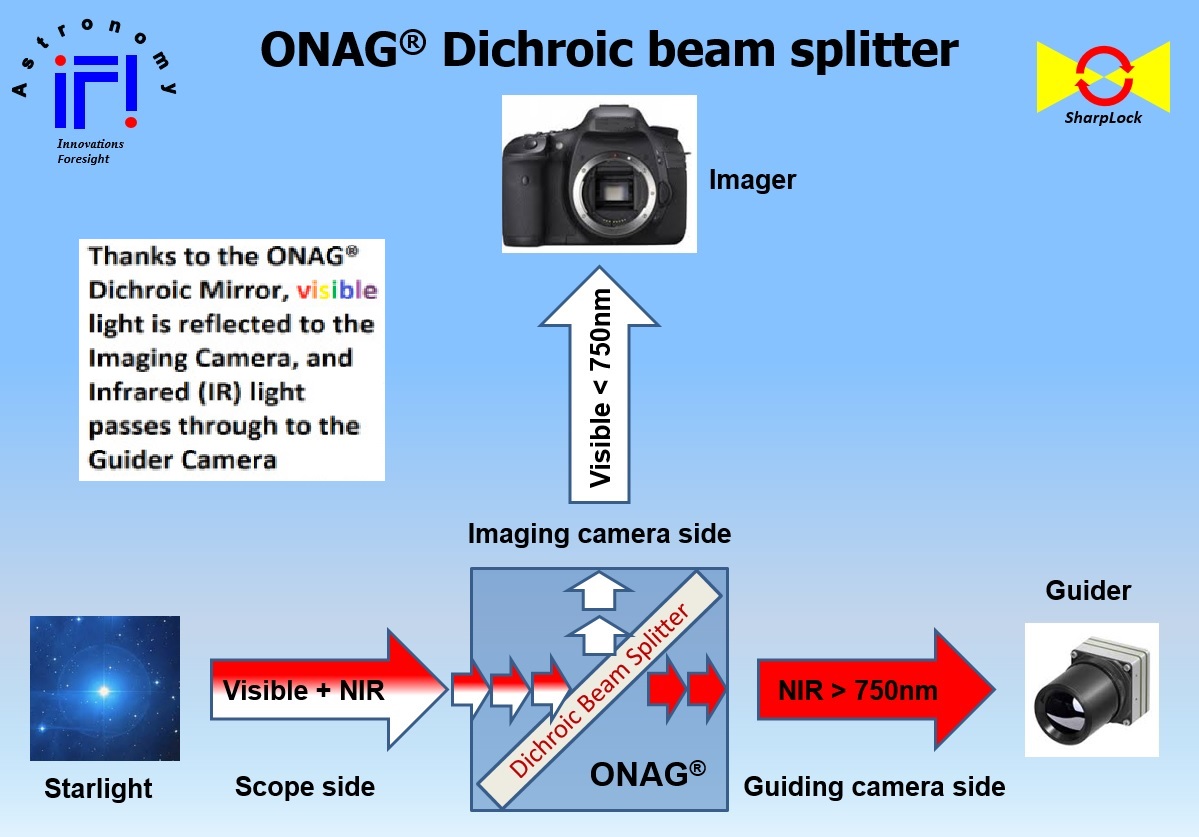
ONAG Transmission curve
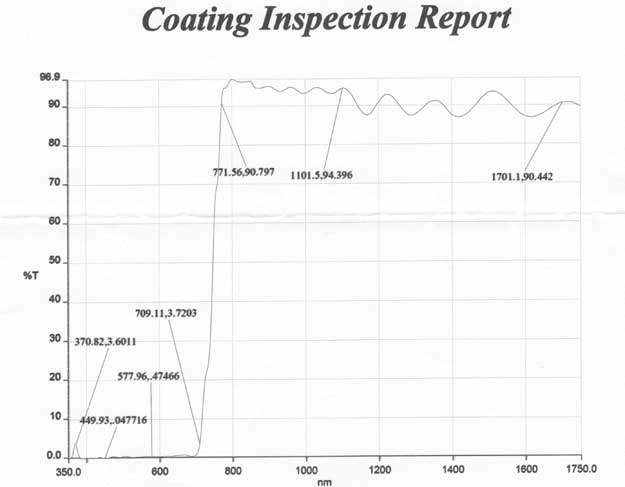
ONAG typical setup
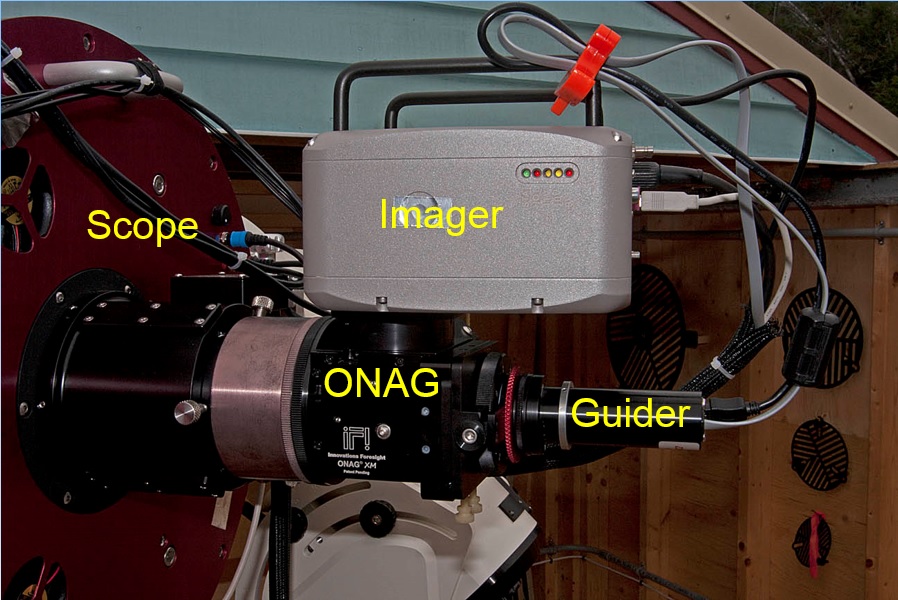
ONAG at Kitt Peak National Observatory on 20" scope (Tuscon Arizona USA)
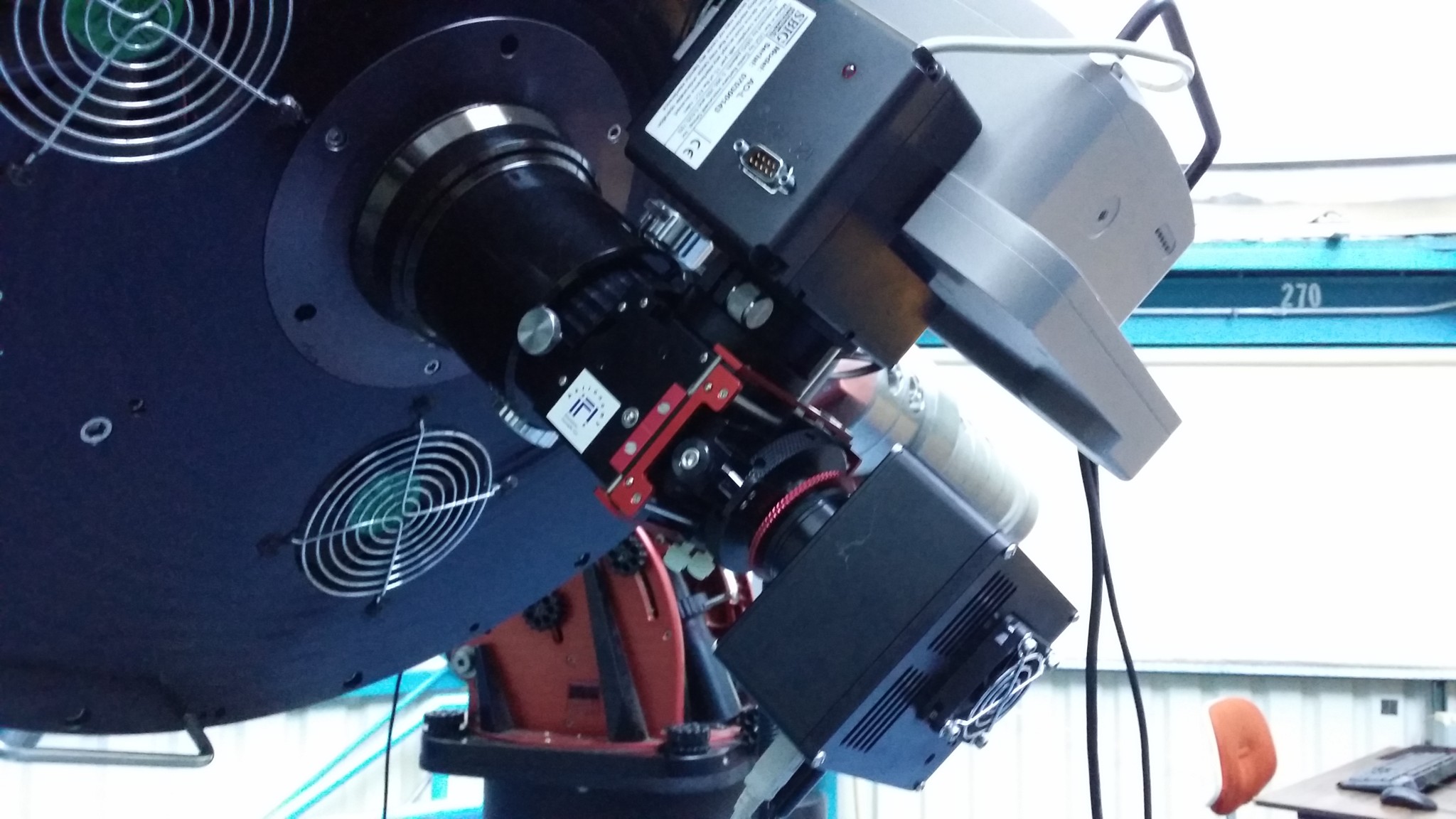
Typically 98% of light in the visible range, from 350nm to 750nm, is sent to your imaging camera, while at least 90% of the light in the near infrared (NIR) range, above 750nm, is transmitted to the guiding camera. Since the light received by your imager is reflected, there is no optical aberration involved in the process, this is no different than a good star diagonal.
Our dichroic mirror is made of high quality, very low thermal expansion, optical grade glass and will not experience any deformation even when exposed to an extended temperature range. Our goal and commitment have been not to compromise with your image quality, ever. The ONAG delivers diffraction limited performances to your imager.
Unfiltered CMOS, CCD cameras are sensitive in NIR as stated above, and more than 76% of the main sequence stars have surface temperatures lower than 3700K (red) radiating large amount of infrared energy. Therefore they are a good candidates for NIR guiding. Guiding in NIR offers a unique opportunity to improve accuracy. Longer wavelengths are less sensitive to atmospheric turbulence (seeing), therefore the ONAG technology improves your active tracking performance.
The end results are better auto-guiding performances, as well as tighter guide stars, with lower FHWM, HFD and better SNR, which in turn offsets the signal drop, if any, using NIR for guiding. Most ONAG’s users have reported little changes in their ability to find and select suitable guide stars.
The visible-NIR cut-off wavelength at 750nm gives full access for imaging using H Balmer alpha band. Since filters and filter wheels are placed in the imager’s optical path, they will not interfere with the guiding camera. Therefore narrow band imaging will not make the guide star too dim to use anymore.
Sketch of an ONAG v.s. OAG (off axis guider) available guiding field of view
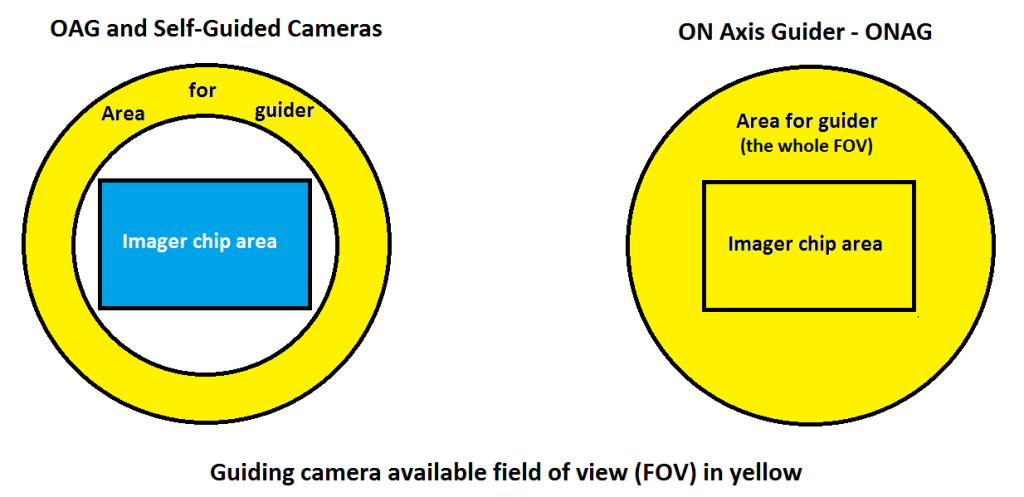
“As mentioned above, there’s an X-Y stage one the (ONAG®) guider port that allows the user to move the center of the autoguider’s view 28 mm horizontally and 23 mm vertically , so you can explore a 46 mm diameter area of your telescope focal plane to search for appropriate guide stars. This area is huge compared to what is available with most off-axis guiding systems.”
“But there’s another aspect of the ONAG® that further improves the efficiency of finding a guide star…”
“…The guide stars available to the ONAG® are closer to the telescope’s optical axis and are thus of much better quality for guiding.”
(Dennis di Cicco, Sky & Telescope December 2012, pages 60-63)
ONAG device (XM model)
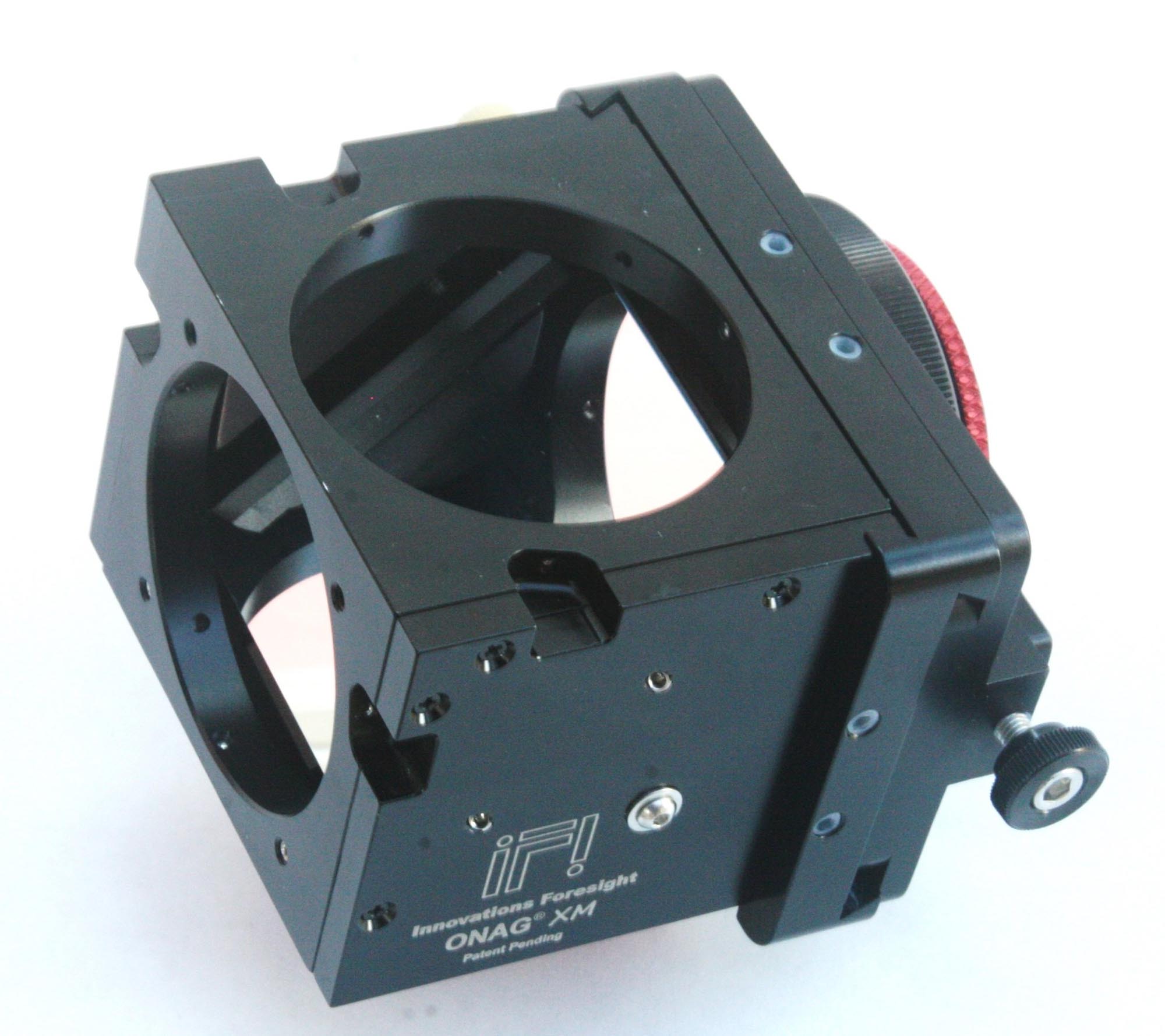
For your best images yet, our ONAG Features:
- Wide FOV for your guider with the integrated X/Y stage.
- No differential flexure even with long focal lengths.
- NIR guiding for reduced seeing & a smooth tracking.
- No imaging camera rotation needed, enjoy reusing your flat frames.
- No filter in the way, ideal for narrow band imaging.
- Sharp images with SharpLock, our real time autofocus.
- No periodic refocus anymore, save time with SharpLock, focus as you image your target.
- The only solution for multi-star guiding using your main scope.
- Weight only 0.8 Kg (1.8 lbs).
- And more…
The ONAG SC and XM
Innovations Foresight offers two version of the ONAG to fit a large range of setup and needs.
The ONAG SC is optimized for APS-C sensor size, up to 28mm in diagonal. It features a guider helical focuser and a low profile X/Y stage.All the ONAG SC optical ports, scope (SP), imaging (IP), and guider (GP), use a standard T2 M42 x 0.75mm (T thread) connections.
The ONAG XM is optimized for full frame chips, up to 50mm in diagonal. It replaces the ONAG XT now discontinued.
Its scope and imaging ports (SP, IP) use a 59mm dovetail system for rigid connections with the scope imaging train (focuser, rotator, focal reducer, …) and imaging/filter wheel equipments. The ONAG XM guide port uses a T2 (M42 x 0.75mm) male thread for connection to a guider camera.
To fit your needs Preciseparts.com provides custom adapters for any of our ONAG.
SC for APS-C chips (DSLR, KAF8300, ...)
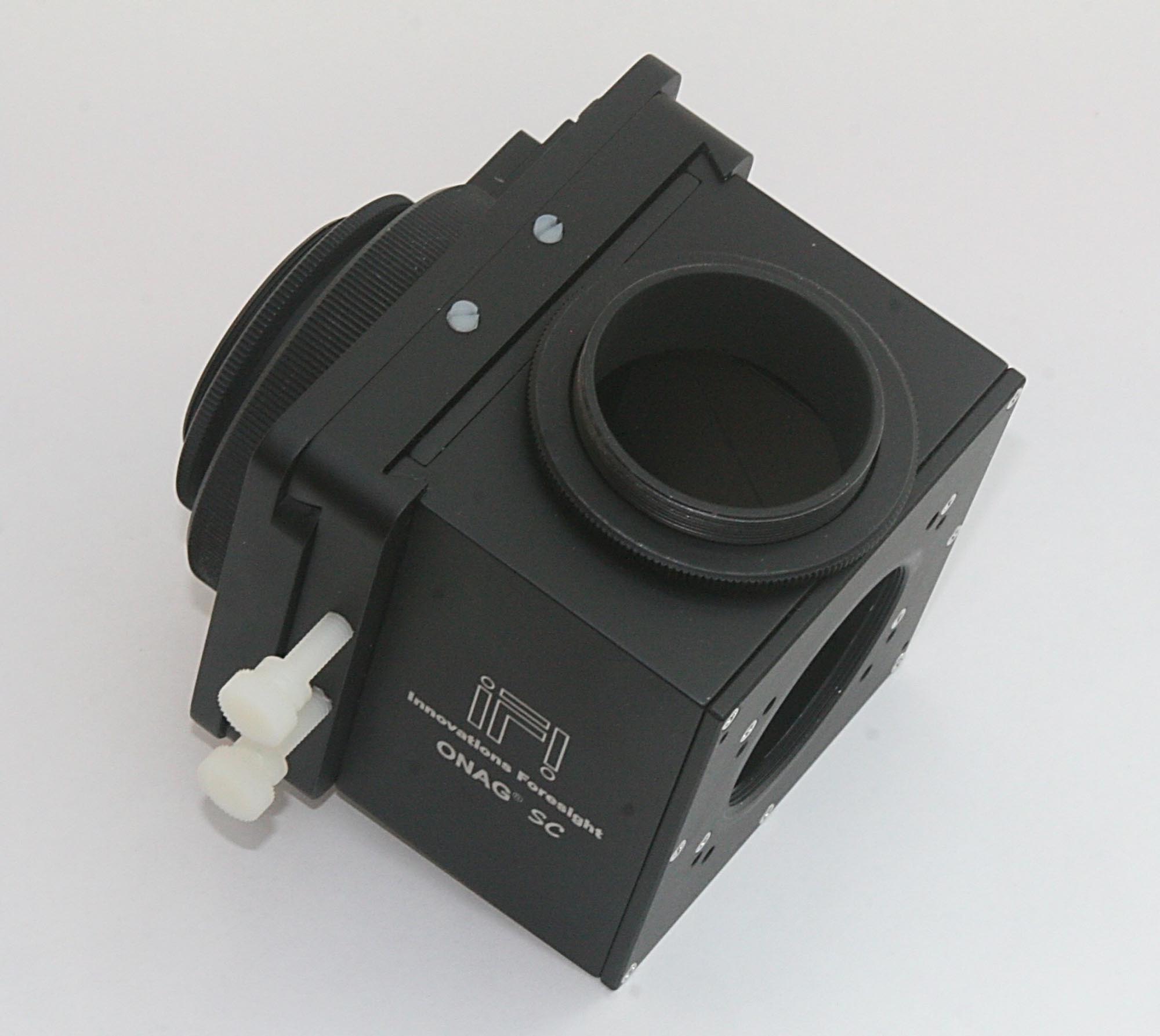
XM for full frame chips, up to 50mm in diagonal

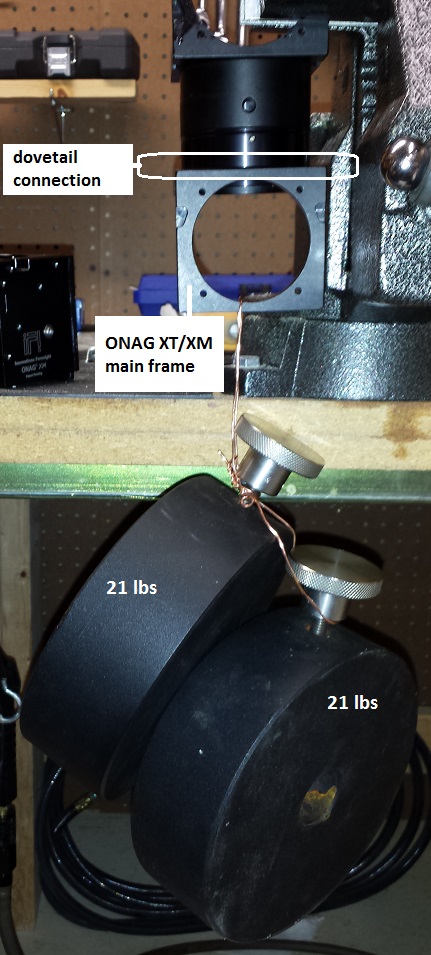
The ONAG® XM uses a 59mm dovetail system for its imager port (IP) and scope port (SP).
This insures a rigid, squared, and secure connection for large imaging camera chips as well as provides minimum back focus solutions. Each female dovetail is equipped with three #4-40 UNC stainless steel set screws.
They must all be tightened to insure a secure attachment using a 0.05″ Allen (hex-key) wrench. The set screw tips have an oval shape to insure a good grip and to protect the aluminum surface of the male dovetail part. Only limited force is needed to lock in position the dovetails, do not over tighten the set screws. Inspection of the set screws in a regular basis is recommended.
The ONAG® dovetail system recommended maximum load is 6 kilograms (14 lbs.) when the three set screws have been correctly tightened. The picture on the left shows an ONAG® XM dovetail supporting a 20 kilogram (42 lbs.) off axis load, as an illustration (not recommended)
The ONAG SC and XM helical focuser and its associated X/Y stage have been designed for heavy guiding cameras with large chips (APS-C), It will supports easily guiders up to 2 kilograms.
ONAG SC
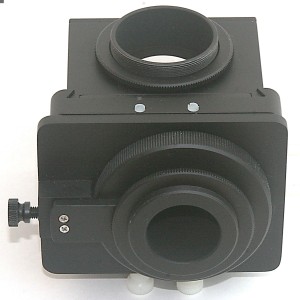
Helical focuser at the ONAG guider port
All ONAG products (SC and XM) feature a convenient very rigid helical focuser for the guider port (GP).
The helical focuser is attached to the ONAG X/Y stage at the back of the unit body where the guiding camera is located. It has a male T-thread (T2 M42 x 0.75mm) with a locking ring to secure the guider at any orientation.
The focuser inner tube supports equipment with 1.25″ outside diameter, such as autoguider (SX lodestar, SBIG ST-i, …) and nosepiece.
The 1.25″ (about 32mm) focuser opening provides a wide FOV allowing the use of large guiding cameras with sensor up to 28mm in diagonal (APS-C size), such as the KAF 8300. This configuration is a handy option for remote and robotic operations as well as the only solution for multi-star (constellation) guiding using the same scope than imaging, no need of a guide scope to enjoy this feature.
The helical focuser does not rotate the guiding camera and has a usable travel of at least 9mm. It uses a fine 800 microns pitch thread to insure a smooth and accurate focus of the guider star.
The left picture shows the ONAG SC helical focuser, the ONAG XM uses the same focuser design.
“After working with the ONAG® for many nights last fall, I can certainly say it’s easier to use than any off-axis systems I’ve tried (and that includes the few that I built myself). It also produced some of the most accurately guided image sequence I’ve ever obtained.”
Dennis di Cicco, Sky & Telescope December 2012
ONAG with a 3 Kg photometrics Cascade 512B camera on a 12” LX200
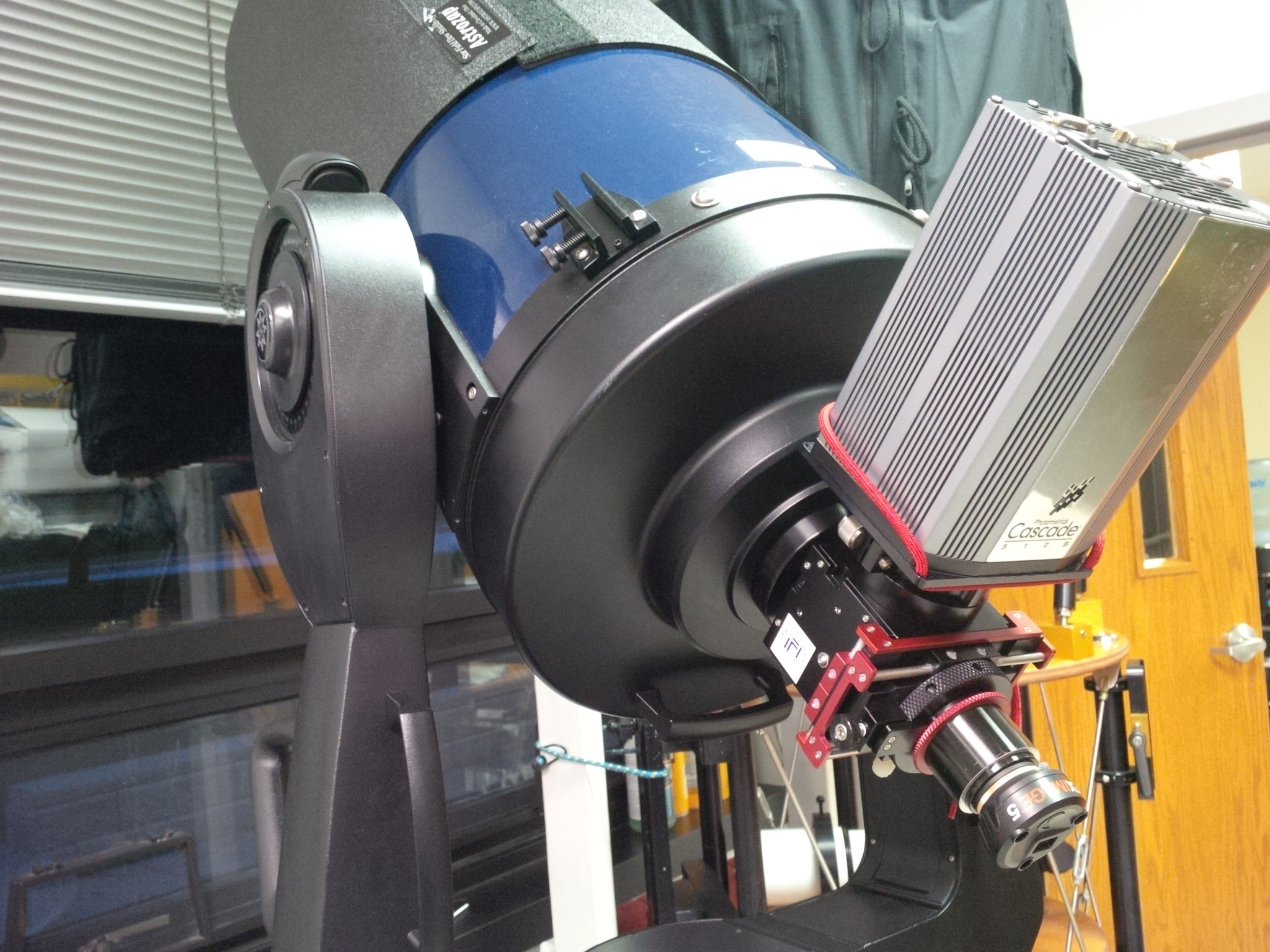
ONAG XT on a 0.8 meter @ f/6 telescope with SBIG AO-L adaptive optics system

“I feel this is the ultimate design in guide star tracking and imaging. I am a firm believer in the system and plan on solely using this type of tracking from now on. My only problem now is… I need to re-image the entire sky to upgrade my stock of sky images!”
Owner of a f/6 32″ relay telescope
Dr. Mario Motta
ONAG with SBIG DSS-7 spectroscope
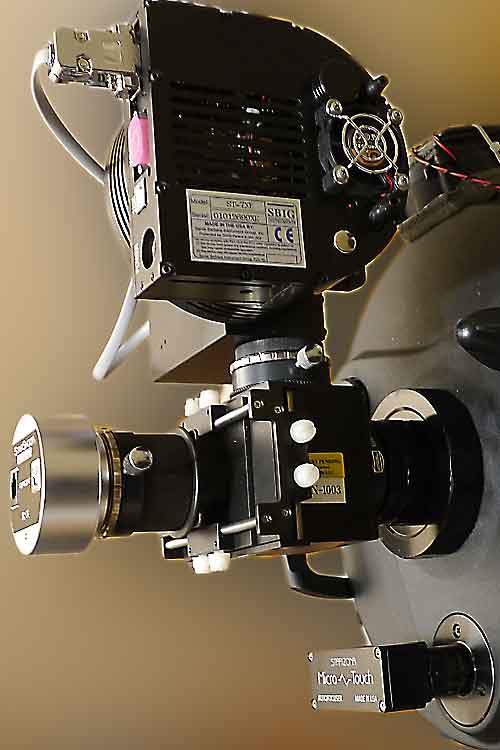
ONAG and Spectroscopy
Astronomical spectroscopy requires to keep the object under analysis, star, nebula, …, centered on the spectrograph slit.
Here the ONAG® can be used as well for precise guiding, allowing to track the analyzed star, or another one with the same scope focal and optical train than for the spectrograph.
Most of the spectral features happen between 350nm to 750nm. This is also the range for most of commercially available spectrograph for amateurs.
The ONAG®‘s dichroic beam splitter has been designed to keep this spectral range available to your imager, and spectrograph as well. The ONAG® mirror’s cut-off wavelength is set at 750nm
ONAG for exo-planet transit and photometric works
with UBVRI filter system or equivalent.
The ONAG XM Lambda is the new full frame (up to 50mm diagonal) member of our On Axis Guider product line.
It has been designed for photo-metric work, such as exo-planet transit.
Here are some related papers:
Achieving High Precision Transit Observations with Sub-meter Telescopes, Dennis M. Conti
Use of On-axis Guiding toReduce the Effects ofPolar Misalignment on Field Rotation, Gaston Baudat
This version of the ONAG XM has a transition wavelength at 700nm where the I band filter starts in the photo-metric UBVRI filter system.
This allows using the ONAG with two cameras with UBVRI filters,. The imaging camera for the UVBR filters and the guiding camera for the I-band.
We recommend using our astigmatism corrector in this context. Accessing, in same time, both the visible and the I-band allows to monitor exo-planet transits in two bands for detection of false positives, hence double stars, without drooping the sampling rate by changing filters.

